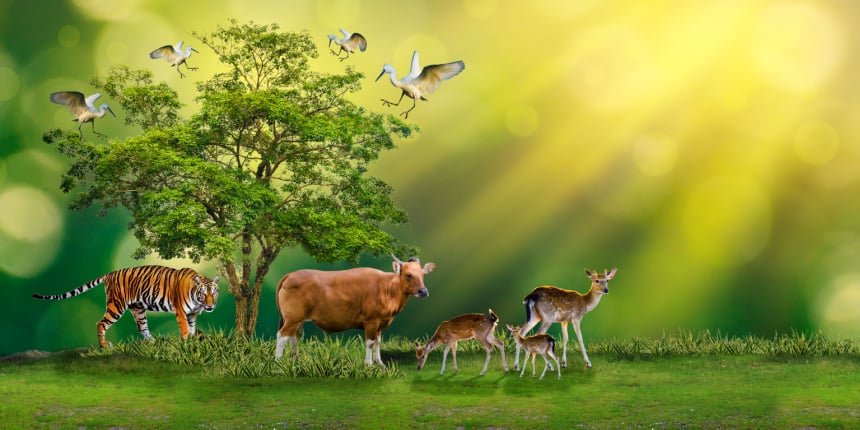GFC Full Form
What is the full form of GFC?
The GFC's full form is Grazing Food Chain. The meaning or definition of a food chain wherein energy at the bottom trophic level is produced through photosynthesis. Grassland food webs are a major source of energy flow in terrestrial ecosystems.
Examples of GFC:
This type of food chain depends on the energy captured by autotrophs and the flow of captured energy to herbivores. Phytoplankton is eaten by zooplankton, zooplankton is eaten by fish or grasses, which rabbits eat, and finally, rabbits are eaten by foxes.
Small plants or grasses are eaten by deer and later eaten by lions.
- What is the full form of GFC?
- Examples of GFC:
- Features of the GFC:
- Type of GFC:
- Importance of the Grazing Food Chain:

Features of the GFC:
As a key energy source for this food chain, the sun is critical to the pasture food chain.
Plant oxidation, viruses attack, and decay due to increased water flow are some factors affecting this food chain.
This food chain provides energy to the environment and contributes to inorganic nitrogen fixation in the soil.
All macroscopic organisms, i.e. all species visible to the naked eye, participate in this food chain.
Type of GFC:
The two types of Grazing Food Chains, and are:
Predator Chain - Here, one animal eats another. The animal that is eaten is called prey, and the animal that eats it is called a predator. and soil to make food. Animals, however, are consumers of those energies because they eat other plants and animals.
Parasitic Chain - Plants and animals in the food chain graze here and become parasites.
Importance of the Grazing Food Chain:
1. Food web studies help us understand the nutritional relationships and interactions between organisms in any ecosystem.
2. It also helps to evaluate energy flow and material cycling mechanisms in ecosystems and understand the movement of hazardous substances.
3. The study of food webs helps us understand bioaccumulation issues.
Frequently Asked Questions (FAQs)
The GFC's full form is Grazing Food Chain.
The meaning or definition of a food chain wherein energy at the bottom trophic level is produced through photosynthesis.
Examples are: Small plants or grasses are eaten by deer and later eaten by lions.
The two types of Grazing Food Chains:
Predator Chain
Parasitic Chain
This food chain provides energy to the environment and contributes to inorganic nitrogen fixation in the soil.

